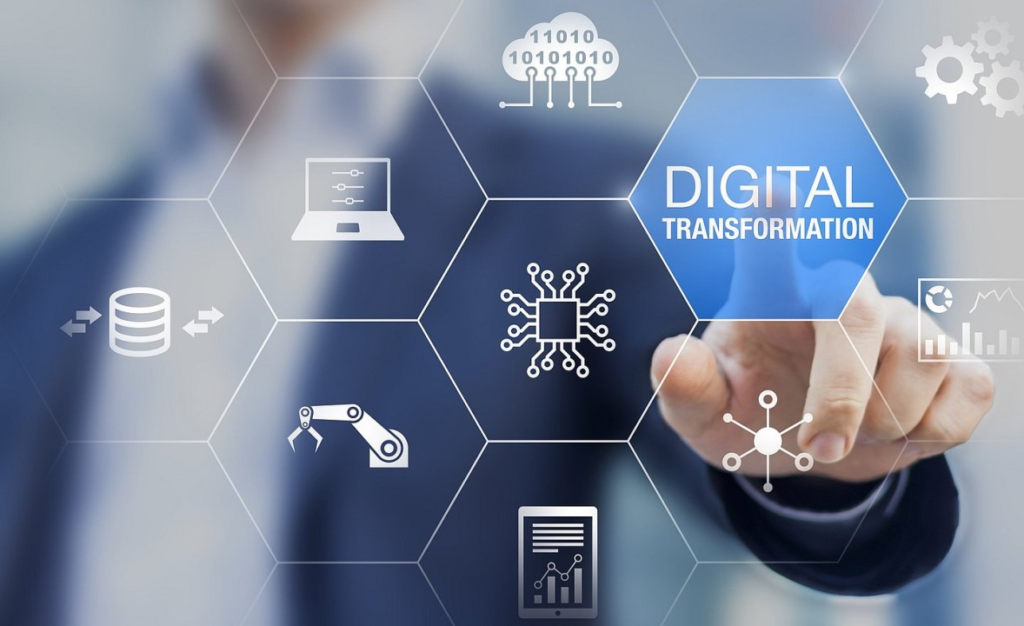Artificial Intelligence (AI) has profoundly impacted Information Technology (IT), revolutionizing how businesses operate, analyze data, and interact with customers. The journey of AI in IT has been marked by significant milestones, from its early conceptual stages to its current status as a transformative force. This article explores the evolution of AI in IT, highlighting key developments and its far-reaching implications.

Early Beginnings
The concept of artificial intelligence dates back to the mid-20th century when pioneers like Alan Turing and John McCarthy laid the groundwork for what would become a revolutionary field. Turing’s proposal of the “Turing Test” in 1950 aimed to determine a machine’s ability to exhibit intelligent behavior equivalent to, or indistinguishable from, that of a human. McCarthy, who coined the term “Artificial Intelligence” in 1956, organized the Dartmouth Conference, which marked the official birth of AI as a field of study. These early efforts focused on developing algorithms and models that could simulate human reasoning and problem-solving.
The Rise of Machine Learning
The late 20th century saw significant advancements in AI, particularly with the development of machine learning (ML) algorithms. Unlike traditional programming, where explicit instructions are provided, ML algorithms enable computers to learn from data and improve their performance over time. In the 1980s and 1990s, the introduction of neural networks and the backpropagation algorithm paved the way for more sophisticated AI models. These advancements allowed for better pattern recognition, speech recognition, and natural language processing (NLP), laying the foundation for modern AI applications.
Big Data and AI Integration
The advent of big data in the early 21st century marked a turning point in the evolution of AI. The exponential growth of data generated by digital devices, social media, and IoT provided AI systems with the necessary fuel to train more accurate and robust models. The integration of big data and AI enabled businesses to derive actionable insights from vast datasets, transforming industries like finance, healthcare, and marketing. Data-driven AI applications, such as recommendation engines and predictive analytics, became essential tools for decision-making and strategy formulation.
The Emergence of Deep Learning

The past decade has witnessed the rise of deep learning, a subset of machine learning that focuses on artificial neural networks with many layers. Deep learning has been instrumental in achieving breakthroughs in image and speech recognition, NLP, and autonomous systems. The development of advanced neural network architectures, such as convolutional neural networks (CNNs) and recurrent neural networks (RNNs), has enabled AI to surpass human-level performance in various tasks. Deep learning’s ability to process and analyze unstructured data, such as images, audio, and text, has revolutionized fields like computer vision, speech synthesis, and sentiment analysis.
AI in IT Operations
AI’s impact on IT operations, often referred to as AIOps, has been transformative. AI-powered tools and platforms help IT teams manage, optimize, and secure their infrastructure more effectively. Predictive maintenance, anomaly detection, and automated incident response are some of the key applications of AI in IT. By leveraging machine learning algorithms, AIOps solutions can identify patterns and trends in system performance, predict potential issues, and recommend corrective actions. This proactive approach minimizes downtime, enhances system reliability, and reduces operational costs.
AI and Cybersecurity
The integration of AI in cybersecurity has been a game-changer. Traditional security measures are often inadequate in the face of sophisticated cyber threats. AI-driven security systems can analyze vast amounts of data in real-time to detect and respond to threats more efficiently. Machine learning models can identify unusual patterns and behaviors indicative of cyberattacks, enabling faster threat detection and mitigation. AI-powered tools also enhance authentication processes, using biometric data and behavioral analysis to ensure secure access to systems and data.
Future Prospects
The future of AI in IT holds immense potential. Advancements in AI research, including explainable AI, reinforcement learning, and quantum computing, promise to push the boundaries of what is possible. AI is expected to become more autonomous, enabling self-managing systems that can adapt and evolve without human intervention. As AI continues to mature, ethical considerations and regulatory frameworks will play a crucial role in ensuring its responsible and equitable deployment.
Conclusion
The evolution of artificial intelligence in information technology has been a remarkable journey, marked by continuous innovation and transformation. From its early conceptual stages to the current era of deep learning and AIOps, AI has fundamentally reshaped the IT landscape. As AI technology advances, its integration into IT will drive further efficiencies, enhance security, and unlock new possibilities for businesses and society. The future of AI in IT is bright, promising a new era of intelligent and adaptive systems that will continue to revolutionize the way we live and work.



